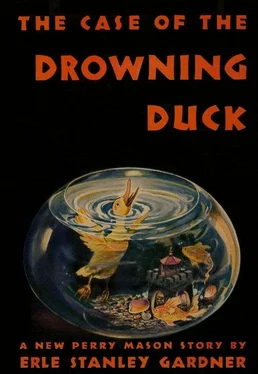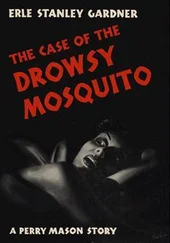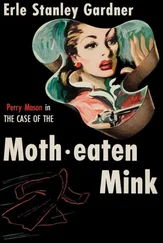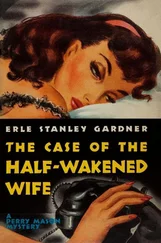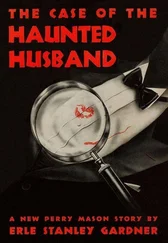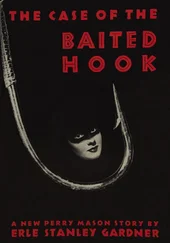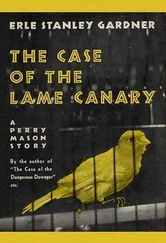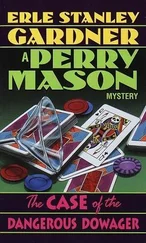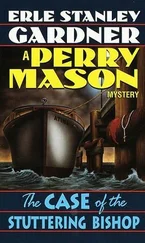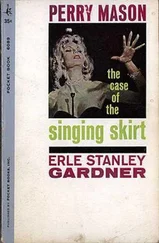However, he managed to sit silently through the course of the long day’s trial while the evidence presented by the district attorney piled up against the defendant.
Witnesses testified that Roland Burr had been a guest at the defendant’s house. It was made to appear that the defendant had invited Burr to his house after a casual conversation during which it had developed that they shared a number of hobbies, among which were fly-casting and photography. It was also made to appear that when they had first met in the lobby of the hotel, Witherspoon had not issued his invitation until after Mrs. Burr had appeared, and been introduced.
The figure of Mrs. Burr began, bit by bit, to assume a more important place in the trial.
Servants testified that Roland Burr made frequent trips to town. Upon most of these trips, his wife would accompany him. But there were times when Burr was in his room that Mrs. Burr would meet Witherspoon in the corridors, or in the patio. Witherspoon’s Mexican servants testified with obvious reluctance, but the story which they told built up a damning case of motivation, indicating a growing intimacy between the defendant, Witherspoon, and Mrs. Burr, the wife of the man who had been killed.
Then came more evidence of stolen kisses, little intimacies, which, under the questioning of the district attorney, began to assume sinister proportions — figures entwined in hallways, low voices at night by the swimming pool, beneath the stars. Bit by bit, he brought out every “clandestine caress,” every “surreptitious sexual advance.”
With cold, deadly precision, the district attorney, having proved motivation, began to prove opportunity. The doctor who had been attending Burr testified to the condition of the patient, that it was obviously impossible for the patient to have left the bed, that not only was his leg in a cast, but it was elevated and held in place by a weight which was suspended from a pulley in the ceiling, one end of a rope being on this weight, the other fastened securely to the patient’s leg. Photographs were introduced showing the position of the deadly glass of acid from which the cyanide fumes had been generated. It had been placed some ten feet from the bed, on a table which had originally been designed as a stand for a typewriter but which had been introduced into the room as a medicine table at the suggestion of John L. Witherspoon himself when the deceased had broken his leg.
The doctor also testified that when he and Mrs. Burr had left the house, the last request of the decedent had been that Witherspoon get his fishing rod, which the deceased said he had left in Witherspoon’s study.
Servants testified that no one but Witherspoon had a key to that study, that, at the time the murder must have been committed, Witherspoon, the servants, and the decedent were alone in the house. The district attorney introduced evidence about the dogs, showing that it would have been impossible for any stranger to have entered the house while the trained police dogs were patrolling the grounds.
The fishing rod which the deceased was holding in his hand when the body was discovered was conclusively identified as being the particular fishing rod which Burr had asked Witherspoon to get for him. Photographs were introduced showing the body as it had been discovered. Two joints of the fishing rod had been put together. The decedent was holding the tip of the rod in his left hand. The right hand was gripped about the ferrule of the second joint. The entire position of the body indicated that the man had been in the act of placing the last joint in the rod when he had been overcome by the fumes of the gas.
“The Court will observe,” the district attorney said, indicating the photograph, “that quite evidently the decedent had just received the fishing rod when the gas fumes were released.”
“Objected to,” Lawrence Dormer, the attorney for the defendant, shouted, getting to his feet. “I object to that statement, Your Honor,” he went on, with the vehemence of indignation. “That is plainly a conclusion. It’s something...”
“I’ll withdraw the statement,” the district attorney smirked. “After all, Your Honor, the photograph speaks for itself.”
Dormer resumed his seat at the counsel table.
The district attorney went calmly on, building up his case. Medical testimony showed approximately the time of death. Medical testimony also showed the manner of death.
The district attorney called James Haggerty, the officer who had entered Milter’s apartment with Mason when the body was discovered. The district attorney asked him his name, his occupation, while Lawrence Dormer sat tense in his chair, ready to object to the first question by which the district attorney would attempt to open the door to prove that other murder.
The district attorney said, “Now then, Officer Haggerty, I will ask you if, when you entered the apartment of Leslie L. Milter on the night prior to the murder of Roland Burr, you noticed anything which would indicate that hydrochloric acid or cyanide of potassium were present in that apartment.”
“Objected to,” Dormer shouted, getting to his feet. “Your Honor, this is not only incompetent, irrelevant, and immaterial, but the asking of that question constitutes prejudicial misconduct on the part of the district attorney, and I assign it as such. The defendant in this case is being tried for one crime, and for one crime alone. That crime is the murder of Roland Burr. There is no point of law which is better established than that when a defendant is being tried for one crime, the Court or jury cannot be prejudiced against him by having evidence introduced of another crime. Apparently, it is the contention of the district attorney that he can introduce this extraneous evidence...”
“I am inclined to agree with Counsel for the defendant,” the Court ruled, “but I’ll listen to the district attorney’s argument.”
District Attorney Copeland was fully prepared, not only with argument, but with a bristling list of authorities.
“If the Court please,” he said, in the calm manner of one who is very sure of his ground and who is making an argument upon which he is thoroughly prepared, “there is no question as to the general rule stated by Counsel for the defense. There are, however, certain exceptions.
“I will state at the outset that where exceptions to the rule exist, the evidence is permitted only for the purpose of showing opportunity, only for the purpose of showing some fact in connection with the crime for which the defendant is on trial, and not for the purpose of proving him guilty of any other crime.
“Under that rule, evidence of prior forgeries has been admitted for the purpose of showing that the defendant has practiced the signature of a certain individual. In connection with certain sexual crimes, previous acts have been admitted in order to show that the natural barriers of restraint have been broken down. And so in this case, Your Honor, I wish to introduce this evidence, not for the purpose of proving that the defendant murdered Leslie L. Milter, but only for the purpose of proving that, first, he was familiar with that method of murder, second, that he had a quantity of hydrochloric acid, third, that he had a quantity of cyanide of potassium, fourth that he knew full well the deadly gases which were liberated by these chemicals when placed in solution.
“Now then, if the Court please, I have a long list of authorities covering the rule of law. I would like to cite these authorities to the Court and would like to read from some of them.
“For instance, Your Honor, quoting from volume sixteen Corpus Juris, at page 589, I read, quote, Where the nature of the crime is such that guilty knowledge must be proved, evidence is admissible to prove that at another time and place not too remote, accused committed or attempted to commit a crime similar to that charged — end of quotation.
Читать дальше
